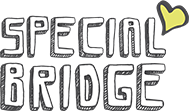Is there even such a thing as a single autism diagnosis test? Strictly speaking, no. At least, not in the usual sense.
In medicine, there are conditions that can be diagnosed on the basis of a single test result. Cancer, for example, is diagnosed through tissue examination.
Autism isn’t quite so simple. In fact, some argue that autism isn’t even a medical condition.
But there are sets of tests that can lead a qualified expert to a diagnosis of autism—or to rule it out. In this article, we’ll talk about two of the more common autism assessments.
If you or someone close to you is undergoing an autism test, or if you already have, you should equip yourself with some background information. It’s also helpful to know what happens next and what options are available to you. From publications to therapies to online communities, there are valuable resources that you may not know about.
Read on to learn how the experts approach autism identification—and what you can do to make the most of an autism diagnosis.
When to Seek an Autism Diagnosis Test
While there are some tell-tale signs and symptoms of autism, it takes a professional to confirm the diagnosis. In fact, it sometimes takes a whole team of them.
If you’re an adult who suspects that you may need treatment for undiagnosed autism, the best place to seek help is a qualified expert in your area. You may need a referral through your primary care physician. In the meantime, there are publications you can look to for basic guidance and context, such as this toolkit from Autism Speaks.
Do you suspect a child in your care may need treatment for autism? The child’s pediatrician is an excellent first recourse. While a primary care pediatrician generally won’t have the experience for a thorough workup, they can provide an initial screening. If they determine that further investigation is appropriate, they’ll likely refer the child to an autism specialist.
The Autism Test Process
Because autism is often more clear and problematic in children, the medical field tends to focus the bulk of their efforts on diagnosing autism in children. The necessary skills to diagnose autism in adults is somewhat more nuanced and rare, but many of the basics are the same. For that reason, the following description is a hybrid overview of the diagnostic process for both children and adults.
Assess the Specialists
If the initial signs point to a possible autism diagnosis, the next step is an initial screening. The screening can’t provide a diagnosis. It’s meant to rule out alternative diagnoses and determine the appropriate next steps—for example, which type of specialist should be consulted.
Due to the rapid, ongoing accumulation of medical data, it’s important to find an autism expert to conduct the full evaluation.
Academic centers are good places to find such experts. That’s because the academic medical staff is tasked simultaneously with patient care, research, publication, and teaching—all in their narrow specialty area.
When speaking with a potential diagnostician, be sure to ask some questions—tactfully, of course. Your questions should cover things like their experience with autism and their assessment methods. Not only will you get a rough sense of their qualifications, but you’ll also know if your respective communication styles are a good fit.
Understand the Tests
Because there is no single, clear-cut test to confirm autism, your clinician will need to balance a wide array of evaluation data with their own clinical judgment. Two common diagnostic instruments, often used in combination, are described below.
Autism Diagnostic Observation Schedule, Second Edition (ADOS-2)
This is a semi-structured protocol meant to evoke and illuminate the patient’s reaction to prompts and scenarios. That means that there are no right or wrong responses—the diagnostician is simply concerned with observing the patient and placing those observations in the appropriate diagnostic context. For more detail about the evaluation, see FAQ: What is involved in an ADOS assessment?
Autism Diagnostic Interview-Revised (ADI-R)
In contrast to the ADOS-2, the ADI-R is a structured assessment. It consists of pointed interviews with the patient’s caregivers. Emphasis is placed on key developmental hallmarks and other specific indicators.
Other Assessments
There may be other tests involved, possibly administered and interpreted by specialists in adjacent fields. That’s because the traits of autism overlap largely with other conditions. To further complicate the diagnosis, some of those other conditions are known to occur alongside autism.
For example, patients with learning disorders or emotional disorders may show some of the same signs as a patient with autism—such as poor performance in school and unusual sensitivities. At the same time, patients with autism may have learning disorders and emotional disorders, as well. (Fortunately, they may also have helpful insights about navigating the classroom environment with autism.)
While You Await the Results
Start by learning the basics from information publications, videos, and other resources. Gather key information like medical records, school records, and major life events.
It also helps to find an ally. It can be hard to keep up with everything when you’re right in the middle of it. Find a confidant who can go with you to appointments and keep track of important information you might otherwise miss.
It would also help to start collecting resources for later reference.
The Results
After the evaluations are completed, the patient will either be given a diagnosis, referred again for further testing, or monitored for more clues. Interventions will be prescribed or recommended as appropriate. These can include medication, therapies, and specialized training curriculum.
A New Chapter
Your medical team can be an excellent resource even after you’ve completed your autism diagnosis test. At the same time, it can be truly enriching to branch out on your own and get to know the fascinating world of autism—whether through local meetups, online forums, or the autism dating scene.
Any diagnosis has the potential to be stressful. Still, few are as dynamic and open-ended as autism. As Dr. Stephen Shore put it, “If you’ve met one person with autism, you’ve met one person with autism.”
Curious about becoming a Special Bridge member? Check out this page for reasons to join.




1 comments:
Heather
September 19, 2020 at 11:39 pm
My name is heather Sinclair and iam 33 years old iam a gril. I. Have drawn hair and I wus sick win I was a little girl I would like to meet a niece guy with drawn hair and. Who likes me